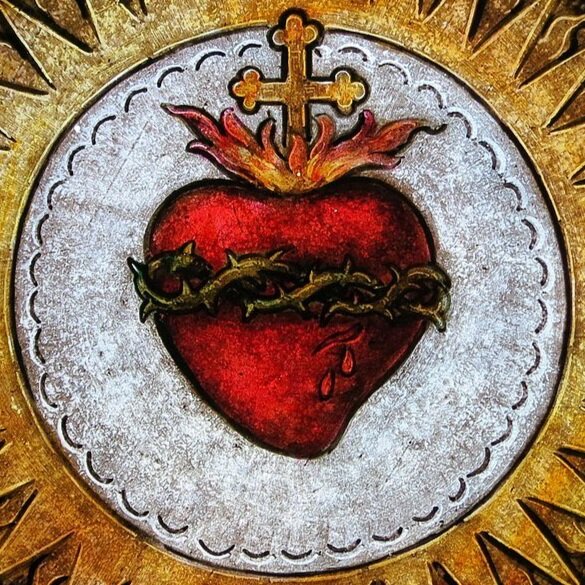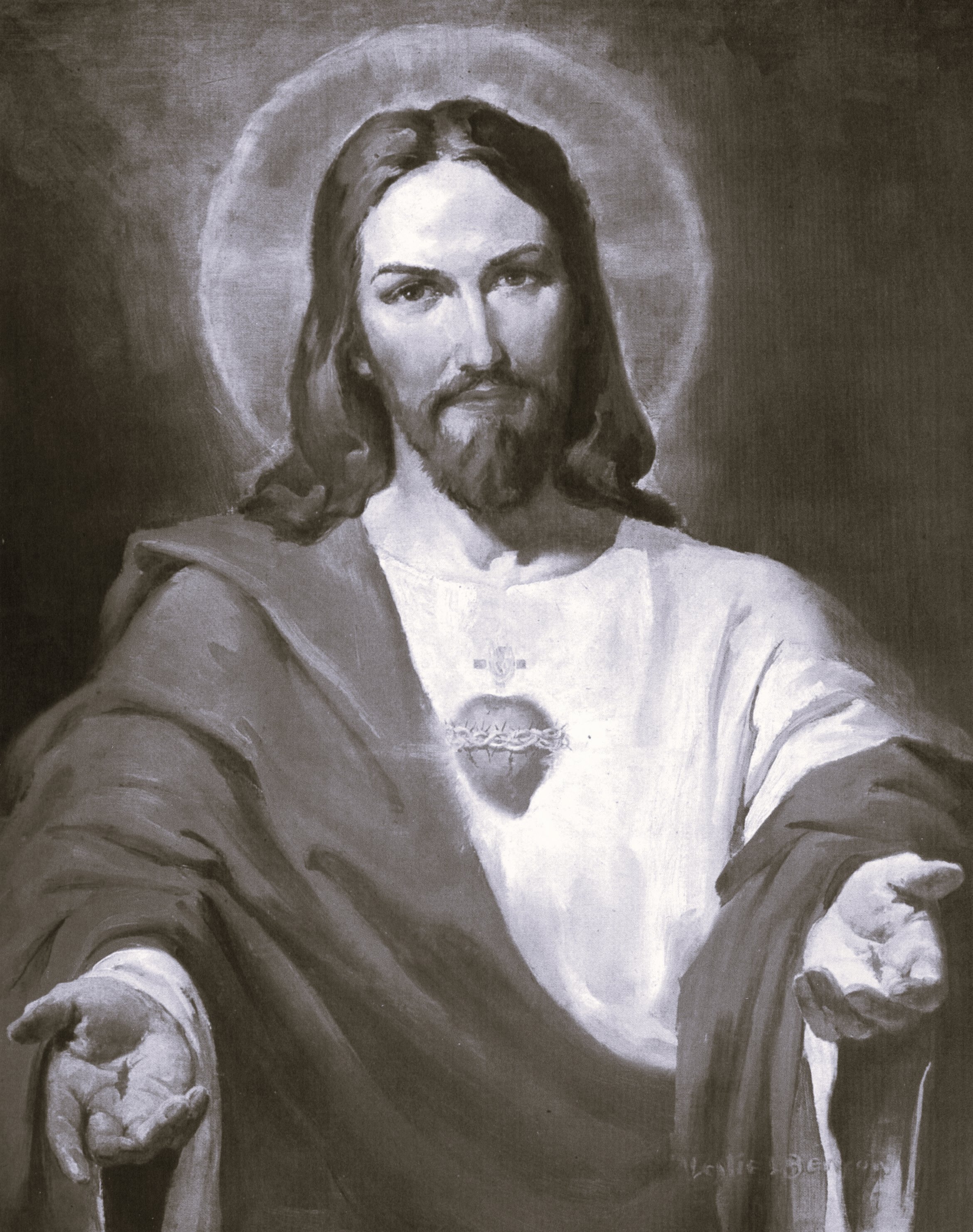“Once again, Fr Joe has provided us with a spiritual guide that is at once practical and sublime.”
-Fr Mark E. Thibodeaux SJ, Author of Ascending with Ignatius
Love Him Ever More: a 9-Day Personal Retreat with the Sacred Heart of Jesus, based on the Spiritual Exercises of St Ignatius Loyola
“Engaging, spiritually impactful, and heartwarming.”
Emily Jaminet, national director of Sacred Heart Enthronement Network, author of Secrets of the Sacred Heart
We’re all seeking peace, wisdom and guidance in these crazy times.
We need a retreat— time away. Time for reflection, time for quiet. Time with the Lord.
What if you could make a retreat in the midst of your daily life?
Christ is calling you: “Come away with me to a quiet place and I will give you rest” [see Mark 6:31].
#2 Amazon New Release! [in ‘Christology’]
#30 New Release in Catholicism! 9-9-22
“A walk with Jesus”
-through His Incarnation, ministry and mission
-uniting my heart with His Sacred Heart
-Ignatian contemplation: using our imagination to engage Jesus and Mary in the Gospels
-reflections on my Jesuit pilgrimage & vocation story [how did Christ call me to be a priest?]
-rooted in the ‘2nd week’ of the Spiritual Exercises of St Ignatius
-St Margaret Mary and St Claude: [France, 1600s, 2 Apostles of the Sacred Heart 🔥❤️🔥]
-origin story of the Apostleship of Prayer [France, 1844, led by young Jesuits]
and more!
“I could plainly see His Heart,
pierced and bleeding,
yet there were flames, too,
coming from it and a crown of thorns around it.
He told me to
Behold His Heart
which so loved humanity.
Then He seemed to take my very heart from me
and place it there in His Heart.
In return He gave me back part of His flaming Heart”
“from my heart, to His Heart, for all hearts”
Table of Contents
Part I: My Heart: Reflection, Gratitude, Healing
Day 1: He Loved Loves Us First
Day 2: My Heart is Made for Love
Day 3: Broken Hearts
Pause for Heart Check
Part II: His Heart: Centered in Christ
Day 4: His Heart, Divine and Human
Day 5: His Heart Calls to My Heart
Day 6: His Body and Blood, Mingled with Mine
Pause for Heart Check
Part III: All Hearts: On Mission with Him
Day 7: Offering My Heart to His Heart
Day 8: The Heart of the Mission
Day 9: United with Christ, Loving & Serving All Hearts
Pause for Heart Check
Outroduction: Sacred Heart Beat: Call, Send, Repeat
Appendix: Prayers, Litany of the Sacred Heart
“I will ask for the grace to know Him more, love Him more, and serve Him more” [St Ignatius, Spiritual Exercises]
from Day 4 of “Love Him Ever More:” His Heart, Divine and Human
Praying with your imagination: encountering Jesus in the Gospels
St Ignatius helps us to reflect on the Incarnation. He invites us to look at three distinct groups of persons. First, we behold the Eternal Trinity, looking down on the earth. Second, we see “etc.” Third, we see the angel Gabriel greeting Mary.
God says, “‘Let us work the redemption of the Human race,’ etc.; and then what the Angel and Our Lady are saying.” In all of this, I “ask for interior knowledge of the Lord, Who for me has become man, that I may more love and follow Him.” God became man for me. Yes, God loves everyone. Yes, Jesus comes to draw all people back into communion with the Trinity. And he became man ‘for me.’
Contemplation
Guided by St. Ignatius, we first looked to the Holy Trinity. “He loves us first” which we examined on Day 1 of our retreat. God is three eternal divine persons, Father, Son, and Spirit. The Father beholds the Eternal Son with infinite love. The Son responds by offering himself to the Father eternally in love. This love between the Father and Son is the Holy Spirit. God exists for all time in glory, power, and love.
Second, we look at the human race. In an act of great love, God has created us. God made the universe, the sun and stars, the moon and earth. We alone are made “in the image and likeness of God.” In the Bible and in human history, we see humanity falling more and more into sin and division. St. Ignatius sketches a diverse portrait of mankind for us, seeing “some white and others black, some in peace and others at war, some weeping and others laughing, some healthy and others sick, some being born and others dying”(SE, 106).
The sin of Adam and Eve is only the beginning of a long history of betrayal, violence, and destruction. If you are not sure, open a history book to any page; you’ll likely see wise leaders as well as treachery and betrayal. Open the newspaper or turn on the TV news. What happened? How could something so good turn so bad so fast?
In glory and splendor, God sees the confusion and sinfulness of the human race. God looks upon us with a depth of love and compassion. God does not turn away, does not give up. Sending prophets, teachers, leaders and angels. Offering us commandments, wisdom, forgiveness, and mercy. Finally, God proclaims, “Let us work the redemption of the human race.” God becomes one of us, one with us. The glorious eternal Son of God will become the newborn Son of Mary.
Third, we turn to Mary. Let’s look at the Annunciation in Luke 1:26-38. There the angel Gabriel appears to Mary with an incredible invitation: would she become the Mother of God?
“And coming to Mary, the angel said, ‘Hail, favored one! The Lord is with you… Do not be afraid, Mary, for you have found favor with God. Behold, you will conceive in your womb and bear a son, and you shall name him Jesus. He will be great and will be called Son of the Most High…’ But Mary said to the angel, “How can this be, since I have no relations with a man?” And the angel said to her in reply, ‘The Holy Spirit will come upon you, and the power of the Most High will overshadow you.’ Mary said, ‘Behold, I am the handmaid of the Lord. May it be done to me according to your word.’ And the angel departed from her” (Luke 1:26-38).
In this section, we’ll use our imagination to help us engage this holy scene. As mentioned in the introduction, we’ll use the method outlined by St. Ignatius to help us contemplate the Annunciation. Of course, we’ll remain within the parameters of ‘Scripture and Tradition’ so as to remain faithful in our prayer. And we ask for a closer connection, heart to heart, with Mother Mary and the child Jesus, who became man for us. They have beating hearts and so do we.
We’ll begin using our sense of sight. Does this scene occur at daytime or at night? St. Luke does not give us this detail. Many artists portray this as a night scene—perhaps Mary was at prayer or awakened from sleep. This likely occurred while Mary was at home, or perhaps in her parents’ home. Using our physical sense, consider what the weather would have been like? Nazareth is in Israel, in the Middle East; it is typically sunny and hot in the daytime, but cool and breezy at night. What about the smell? A dusty breeze, the scent of approaching rain, or maybe candles burning? Then, let us focus on the appearance of Mary. She is a young woman, engaged to be married. Look at her face, her eyes as she beholds this angel. Beneath her expression, consider the emotions in her heart. The Gospel tells us that she was ‘greatly troubled’ and ‘pondered what sort of greeting this might be.’ She asks, “How can this be?” The angel tells her, “Do not be afraid, Mary.” We may get a personal sense of Mary feeling overwhelmed, confused, and yet drawn into this grand vocation. She looks up and slowly exhales, now closing her eyes. God has been with her every day. In the synagogue, she’s heard the stories of God’s power and might, leading the Jewish people out of slavery, through the Red Sea, and into the promised land. She’s heard words from the prophets about a Messiah who will come to save us. She’s chanted the psalms and pondered them at night: “The Lord is my shepherd, there is nothing I shall want.” A tear forms in the corner of her eye, rolling down her cheek. “And name him Jesus,” says the angel. “Me?” she prays. “You’re asking me? Then, yes. Fiat. Let it be done to me according to your word.”
St John simply writes, “And the Word was made flesh and dwelt among us” (John 1:14). For the first time, God now takes on human flesh and becomes one of us. In the coming days, the tiny heart of Jesus will begin to beat beneath the heart of Mary as he grows in her womb. God now has a beating human heart. God looks upon the sinful hearts of the human race, seeing our hard hearts. He does not turn away from us. Rather, he offers us His Sacred Heart in his Divine Child, Jesus.
St Ignatius also encourages us to ‘reflect on ourselves.’ How do I feel as I read and pray with this passage? Joy, hope, fear? Have I ever felt a call from God—and how did I respond? Ignatius then asks us to have a ‘colloquy,’ or friendly conversation with the key characters in a Gospel passage. Is there anything I want to say to Mary? To ask her? Anything she wants to say to me? With her, is there anything I want to say to her Son, Jesus—as he takes on human flesh as a tiny child in her womb? Take a moment to reflect on this. You may want to jot down a few words and images in your journal or notebook…





